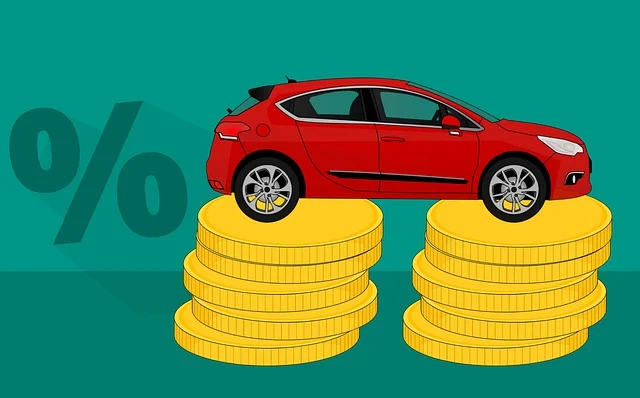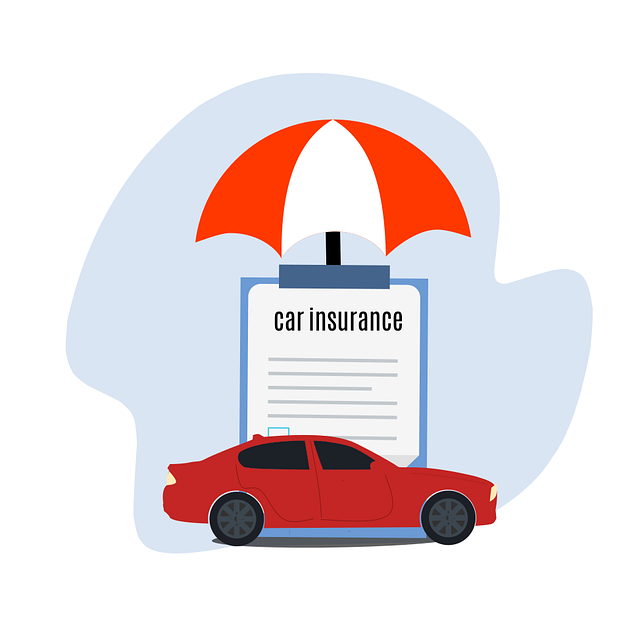Finding the most competitive auto insurance rates doesn’t have to be confusing. We can get the best deals by comparing quotes from several top insurers, using online comparison sites that show side-by-side prices. Factors like our age, location, and driving history affect the cost, so personalised quotes make a big difference.
Many websites, such as NerdWallet and The Zebra, offer tools that quickly gather quotes from dozens of companies. This helps us save time and money by spotting cheaper options that fit our needs. Knowing where to look means we’re more likely to find affordable coverage without sacrificing important benefits.
Car insurance prices can vary a lot between companies, even for people with similar profiles. That’s why shopping around and using trusted comparison sites is the smartest way to find competitive rates in 2025. We’ll explore the best places to check for quotes and how to make the most of the process.
Understanding Competitive Auto Insurance Rates
When looking for the best auto insurance, it’s important to know what affects your premium and what coverage options exist. We also need to understand how insurers figure out what we pay. This knowledge helps us compare deals with clear eyes.
Factors Affecting Insurance Premiums
Several key factors directly impact how much we pay for car insurance. Our age matters because younger drivers often face higher rates due to less experience.
Our driving history also plays a big role. If we’ve had accidents or speeding tickets, insurance companies will charge more.
The vehicle type affects rates, too. Sports cars or expensive models usually cost more to insure than family sedans.
Finally, our location influences prices. Living in an area with high theft or accident rates can push premiums up. Even state rules and coverage requirements change costs — for example, some states demand more generous coverage, which makes policies pricier.
Types of Coverage Levels
Choosing a coverage level is a big part of finding competitive rates. There are basic types like liability insurance, which covers damage to others if we cause an accident. This option is usually the cheapest and often required by law.
Then there’s comprehensive coverage, which includes non-collision damage like theft or weather damage. It costs more but protects our car better.
Collision coverage pays for repairs after a crash, no matter who is at fault. We can also add extras like roadside assistance or rental car coverage.
Picking the right mix depends on our budget and risk tolerance. Sometimes, lower coverage saves money but leaves us with bigger costs if something goes wrong.
How Insurance Companies Calculate Rates
Insurance companies use complex formulas to decide our premiums. They combine data about risk factors like age, driving record, car model, and location.
They also use statistical models based on past claims to predict how likely we are to make a claim.
Rates reflect how much it costs insurers to cover people like us, plus their profit margin.
Discounts play a part too. We can save money for things like safe driving, bundling multiple policies, or driving fewer miles.
Overall, rates aim to match the risk and costs involved with insuring us. This is why getting quotes from several companies often helps us find a better deal.
Researching and Comparing Insurers
Finding the best auto insurance means paying close attention to rates, customer experiences, and the insurer’s ability to pay claims. We need to look beyond just the price and check other important factors. This way, we can pick a provider that gives good value and reliable service.
Using Online Comparison Tools
Online comparison tools make it easier for us to see different car insurance quotes side by side. These sites ask for a few details about our car and driving history, then show us prices from several companies. Using at least three different comparison sites can help us spot the best deal.
Some popular tools include Compare.com, Insurify, and Jerry. They update prices in real-time and often highlight discounts we might qualify for. These sites save time and help us avoid calling each company ourselves.
But we should also check the coverage details on each quote to make sure we’re comparing similar policies. Sometimes, a cheaper option might offer less protection or have higher deductibles.
Reviewing Customer Ratings and Reviews
Customer feedback tells us a lot about how an insurer treats its clients. We can read ratings and reviews on websites like Trustpilot or J.D. Power to see how policyholders feel about claims handling, customer service, and billing.
Look for patterns in reviews. If many people complain about slow claim processing or poor communication, that’s a red flag. Positive reviews usually mention quick support and straightforward processes.
Besides online reviews, personal recommendations from friends or family can be valuable. They often provide honest insights based on real experiences.
Evaluating Financial Stability of Insurers
It’s important to choose insurers who can afford to pay claims when needed. Financial ratings from firms like A.M. Best or Moody’s show us how strong an insurance company is financially.
High ratings mean the company has a solid financial base and is less likely to face problems paying claims. Lower ratings can indicate riskier insurers.
We can find these ratings on insurer websites or financial rating agencies. Checking stability helps us avoid issues down the road, ensuring we’re protected when accidents happen.
Exploring Discounts and Special Offers
Finding the right car insurance deal means looking for ways to lower our premiums through discounts. Many insurers offer savings based on our driving habits, policies, and time with the company. Knowing where to find these discounts can make a real difference in what we pay.
No-Claims Discounts
One of the most reliable ways to save is through no-claims discounts. This reward is given when we don’t make any insurance claims over a set period, usually a year or more. The longer we go without a claim, the bigger the discount can become.
Most insurers offer a discount between 30% 60% for no claims over several years. It’s important to check if the no-claims discount is protected, meaning we won’t lose it if we have a minor accident. This can help us keep enjoying lower premiums even after an accident.
Multi-Policy Savings
Insurers often reward us for bundling policies. For example, if we hold both car and home insurance with the same company, we can get a multi-policy discount. This usually lowers our overall premiums by 5% to 15%.
Using the same insurer for different policies also makes managing those policies easier. When shopping, it’s worth asking about packages including car, home, or even life insurance to save money and simplify our bills.
Telematics and Usage-Based Programmes
Some companies offer discounts if we use a telematics device or app that tracks our driving. This helps insurers see how safely and how much we drive. If we prove to be careful drivers or don’t drive much, our premiums can drop.
These programmes are great for people who drive less than average or avoid risky behaviours like hard braking or speeding. Discounts can be up to 50% for low-mileage drivers or those with good driving scores.
Loyalty and Introductory Offers
Insurance companies sometimes offer introductory discounts to new customers. These deals may come in the form of reduced premiums or added benefits for the first year. It’s a good idea to compare these offers, but watch out for price increases when the introductory period ends.
Loyalty discounts reward us for staying with the same insurer over time. These can be smaller savings, but they add up if we keep renewing our policy. Asking about loyalty perks can help us decide if staying put is better than switching.
Considering Local and Specialist Providers
To find competitive car insurance rates, it helps to look beyond the big national firms. Local and specialist providers often offer unique benefits like personalised service or tailored policies that fit specific needs.
Regional and Community-Based Insurers
Regional insurers focus on specific areas or states. They might have a stronger understanding of local risks, such as weather or traffic conditions, which can influence their pricing.
These companies often give better rates to drivers in their region because they have lower overheads and tighter risk pools. Some local insurers also reward safe driving with discounts not found at larger firms.
If we live in a smaller community or less-populated area, checking out these providers can sometimes save us money while giving us more attention from customer service.
Niche and Specialist Insurance Firms
Specialist insurers cover specific groups or types of vehicles. For example, they might focus on young drivers, classic cars, or eco-friendly vehicles.
They design policies to match the unique needs of these groups, which can lead to better prices or coverage options. For drivers with unusual situations—like limited mileage or a certain profession—these firms can be a good fit.
Using specialist providers may require more research, but their custom plans can often be more cost-effective than standard policies. We just need to check if they are trusted and properly licensed before signing up.
Timing and Renewal Strategies
Knowing when to shop for quotes and how to manage policy renewal can save us money. Timing our search and renewal can help us avoid rate hikes and spot better deals.
Best Times to Shop for Quotes
The best time to shop for car insurance quotes is right after important life changes. This could be moving house, buying a new car, or changes in our driving record. These events often affect premiums.
December is usually a good month to compare prices. Many insurers offer discounts or compete more aggressively as the year ends. Checking rates then can give us an edge.
We should also look for new quotes before our policy renews. It’s common for insurers to raise rates at renewal, so shopping around just before this date can help us find better options.
Optimising Policy Renewal Dates
Most insurers auto-renew policies and send renewal notices about a month before the expiry date. We should use this notice as a reminder to review quotes from other companies.
If an insurer plans not to renew, they must tell us at least 10 days in advance. This gives us time to find new coverage without a gap.
We can also try to align our renewal date with times when rates are lower, such as avoiding renewal during known periods of rate increases. Keeping track of our renewal dates helps us shop smarter.
By paying close attention to renewal timing and actively comparing policies, we can avoid surprise rate jumps and lock in better deals.
FAQs
How many quotes should we compare?
We recommend comparing at least three different insurance companies. This helps us find the best price and coverage for our needs.
Which companies often offer the cheapest rates?
Companies like GEICO, USAA, and Travelers usually have low prices. But our factors — such as age, location, and driving record — also affect rates.
What affects our car insurance rates?
Several things play a role:
- Driving record (accidents or speeding can raise rates)
- Credit score (used in many states)
- Type of vehicle (some cars cost less to insure)
- Location (where we live matters)
Can using online comparison tools save us money?
Yes, shopping around online helps us find competitive rates and better coverage options. It’s easy to get personalised quotes side by side from top insurers.
Is full coverage always more expensive?
It often costs more than minimum coverage. However, depending on our situation, some companies, like Travelers, may offer affordable prices for full coverage.
We can shop smart and save on our car insurance using these tips. For more info, check here please: Car Insurance



